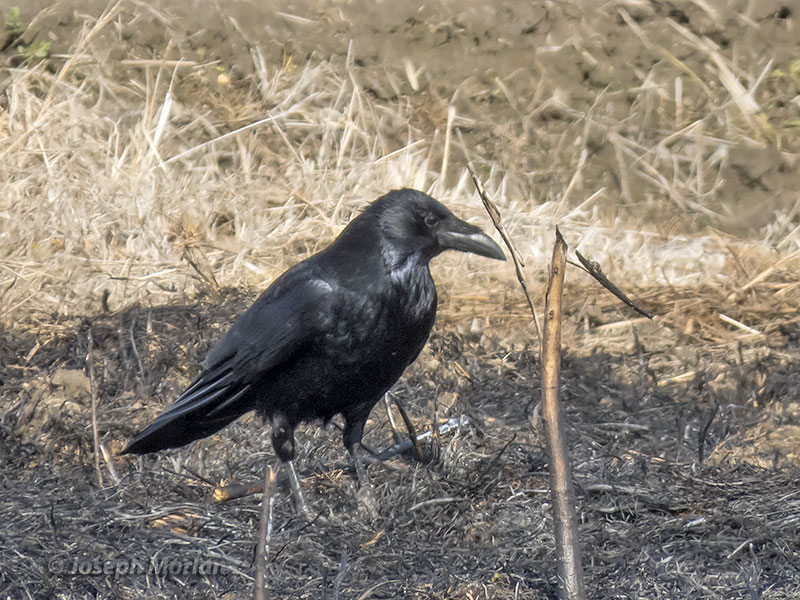
Attracted to a recent burn. The metallic blue sheen is characteristic of this species which has discontinuous populations in Europe and East Asia with those in East Asia averaging larger than those in Europe. They are separated by a partly gray, but otherwise similar species, the Hooded Crow C. cornix. The two hybridize where they come into contact, but the hybrid offspring are at a selective disadvantage (Parkin et. al. 2003). Canon PowerShot SX60 HS.
References:
Haas, F., Pointer, M.A., Saino, N., Brodin, A., Mundy, N.I. & Hansson, B. (2009) An analysis of population genetic differentiation and genotype–phenotype association across the hybrid zone of carrion and hooded crows using microsatellites and MC1R. Mol. Ecol. 18(2): 294–305.
Londei, T. (2013) Alternation of clear-cut colour patterns in Corvus crow evolution accords with learning-dependent social selection against unusual-looking conspecifics. Ibis 155(3): 632–634.
Madge, S. (2017). Carrion Crow (Corvus corone). In: del Hoyo, J., Elliott, A., Sargatal, J., Christie, D.A. & de Juana, E. (eds.). Handbook of the Birds of the World Alive. Lynx Edicions, Barcelona. (retrieved from http://www.hbw.com/node/60794 on 7 June 2017).
Madge, S. & Burn, H. (1994) Crows and Jays: A Guide to the Crows, Jays and Magpies of the World. Houghton Mifflin, Boston.
Parkin, D. T., Collison, M., Helbig, A., Knox, A. G., & Sangster, G. (2003). The taxonomic status of Carrion and Hooded Crows. British Birds 96 (6): 274–290.